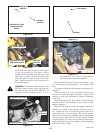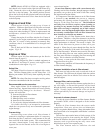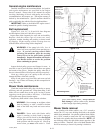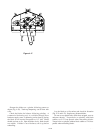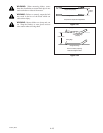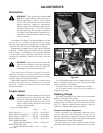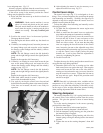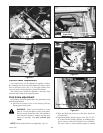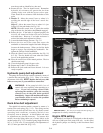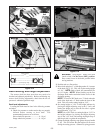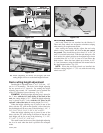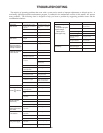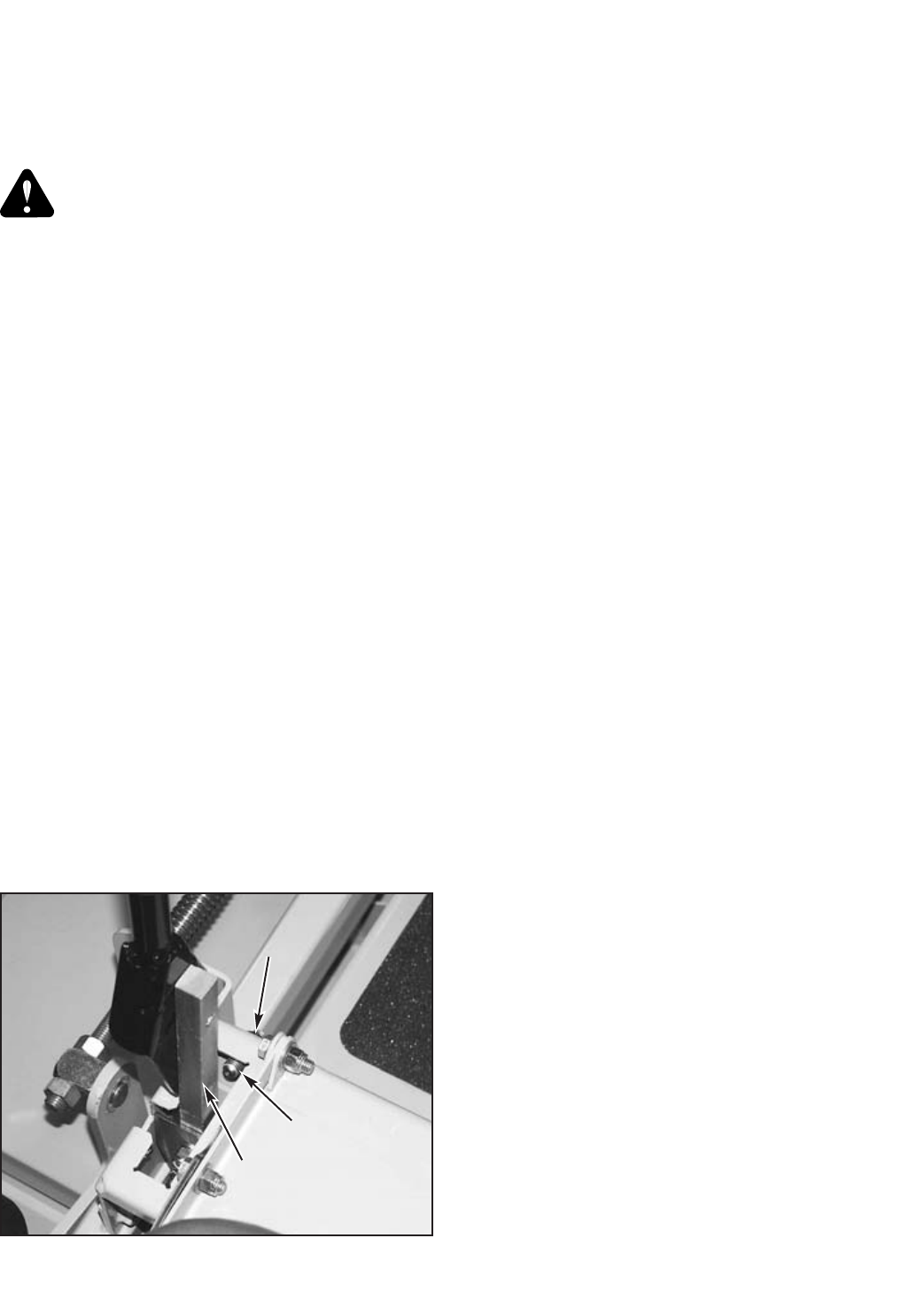
lever and pump arms. Fig. 5-2
Neutral is properly adjusted when the control levers are in
the neutral position and the drive wheels are not turning.
If the tractor creeps in the neutral position the control
linkage may be adjusted as follows:
1. Raise and block the tractor up so the drive wheels are
off of the floor.
WARNING: Make certain machine is secure
when it is raised and placed on the jack stands.
The jack stands should not allow the machine to
move when the engine is running and the drive
wheels are rotating. Use only certified jack
stands.
2. Position the control lever in the neutral position.
Disengage the deck clutch.
3. Start the engine and observe which way the wheels are
rotating.
4. If wheel(s) are rotating forward, loosen the jam nuts on
the pump linkage rods and rotate the rod to lengthen
the steering control linkage until the wheel(s) come to
a stop. Fig. 5-2
NOTE: The left linkage controls the left hydraulic
pump and the right linkage controls the right hydraulic
pump.
Repeat for the opposite side if necessary.
5. If wheel(s) are rotating in reverse then loosen the jam
nuts on the pump linkage rods and rotate the rod to
shorten the steering control linkage until the wheel(s)
come to a stop. Fig. 5-2
NOTE: The left linkage controls the left hydraulic
pump and the right linkage controls the right hydraulic
pump.
Repeat for the opposite side if necessary.
6. When both wheels remain in neutral, tighten the jam
nuts to lock the turnbuckle in place.
7. Test again by moving the control levers forward and
backward before returning them to the neutral position.
If the tires are in neutral, the unit is now ready for
operation.
8. After adjusting for neutral it may be necessary to re-
adjust the control lever stop. Fig. 5-3
Control lever stops
The control lever stops (Fig. 5-3) are designed to do two
things: First, and most important, they must keep the pumps
from bottoming out internally. Secondly, the stops may be
adjusted to help drive straight when the control levers are
pushed forward against the stops.
To keep the pumps from bottoming out internally use the
following procedure:
1. To make the first adjustment the tractor engine must
NOT be running.
2. Check to make sure the control levers are against the
stops before the pumps are bottomed out internally.
To do this, gently and slowly move the control levers
forward and feel if there is some resistance on the
pump lever before the control levers hit the stops.
Check one side at a time. If you sense that the pump
arms are stopping the forward motion of the control
arms, loosen the jam nut on the adjustable stop of the
corresponding side and turn the stop (set screw) inward
to stop the control levers slightly before the pump
bottoms out. Lock in place when the adjustment is
correct by re-tightening the jam nut.
3. Do this for each side.
To adjust the stops for driving straight when control levers
are against the stops during operation:
1. Determine which drive tire is rotating too fast when
both control levers are against the stops. Then stop the
tractor and loosen the lock nut on the side which is
rotating too fast and turn the stop (set screw) inward to
stop the control lever sooner. Tighten the lock nut on
the stop and test again. Repeat this procedure until
unit drives straight.
NOTE: Since this is a hydrostatic drive, variables such as
temperature of oil, efficiency of pumps and motors, tire
pressure etc. may effect the consistency of the ability to rely
on the stops to drive straight without the operator making
minor steering adjustments with the control arms.
Steering dampener
The steering dampener (Fig. 5-4) is spring loaded to return
the control levers to the neutral position from the reverse
position. This gives the operator a sense of neutral during
operation.
To set the steering dampeners in the correct operating
position follow these steps:
1. Place the control lever in the neutral position.
2. Loosen the steering dampener’s front ball stud.
3. Pull the dampener spring housing pass the point that
the internal spring is engaged.
4. Release the dampener spring housing and allow the
internal spring to bring the housing back to the neutral
position.
5. Tighten the nut on the steering dampener’s front ball
stud.
375527_0406
5-2
Figure 5-3
Control
lever
Stop
Jam nut



